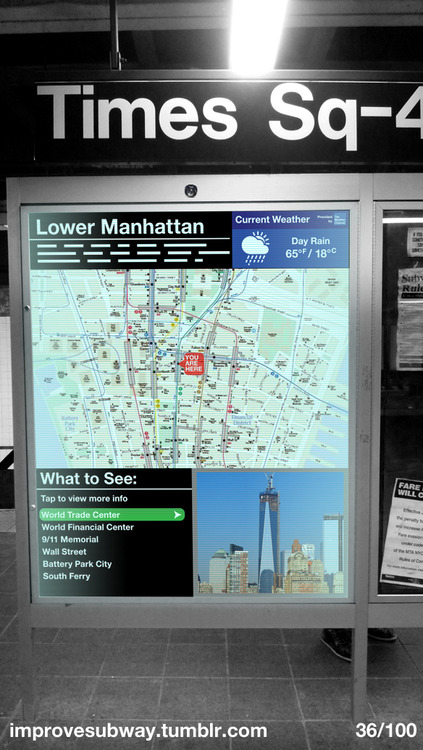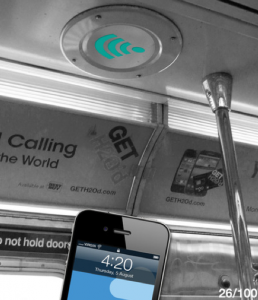
By Tom Peterson
How can we pull off that big project or life goal? Mark Twain said, “The secret of getting ahead is getting started. The secret of getting started is breaking your complex overwhelming tasks into small manageable tasks, and then starting on the first one.”
Twain is absolutely right. But what comes next is just as important: repeatedly take action on the project. In Manage your Day-to-Day, Gretchen Rubin on harnessing the power of frequency says, “We tend to overestimate what we can do in a short period, and underestimate what we can do over a long period, provided we work slowly and consistently.” She describes the power of frequency: it makes starting easier, keeps ideas fresh, keeps the pressure off, sparks creativity, nurtures frequency, fosters productivity. “One of my most helpful Secrets is, ‘What I do every day matters more than what I do once in a while.’”
100 Ways to Improve the NYC Subway
In mid-2013 Randy Gregory announced on his Tumblr site: “For the next 100 Days, I will propose various improvements to the New York City Subway, which in 2012 had 1.6 billion riders, and should be seen as the best subway in the country, if not the world. I’ll be exploring various ideas, from UX, Environmental, Co-Branding, Audio/Visual, and more, including potential interviews with MTA employees.”
He was working on his masters in branding at the School of Visual Arts in Manhattan. If nothing else, this project is certain to brand Randy Gregory as someone who has struggled with how to improve the subway. He now gets invited to present his findings and has been featured in publications and blogs.
Generating and illustrating 100 ideas was ambitious. But by consistently repeating the “small manageable tasks,” Gregory created a significant body of work. And he started community conversations about New York’s subway system. Some ideas would cost billions, while others are almost free. Some will certainly become reality. Here are three:
1. Skylights. Why aren’t there more skylights in the station? More light would mean warm spots in the winter, and would be something interesting to look at when waiting for a train. Also, this could help people who suffer from seasonal affective disorder. Just because we’re underground, doesn’t mean it needs to feel like a cave.
41. Exercise Call to Action. Experience isn’t just about making a system work better, it’s also about making people better. Using data, we can calculate & display how many calories are burned using the stairs and walkways instead of escalators, elevators, and automated paths, and use that data as a call to action to get New Yorkers out there and use the urban gym.
 26. Wifi on the trains. It helps in situations when people get stuck on the trains, so they can communicate with their jobs, friends, and family…for example, if you’re on the 1,2, or 3, and the lines get shut down because of a missing inmate. Or, keep track of your tasks/directions as you plan out your busy schedule. Or even watch cat videos on Youtube. Wifi would enable a whole new level of ease on the trains.
26. Wifi on the trains. It helps in situations when people get stuck on the trains, so they can communicate with their jobs, friends, and family…for example, if you’re on the 1,2, or 3, and the lines get shut down because of a missing inmate. Or, keep track of your tasks/directions as you plan out your busy schedule. Or even watch cat videos on Youtube. Wifi would enable a whole new level of ease on the trains.
This summer an artist friend, Hamid Ebrahimifar, set for himself a goal of creating 50 portraits one square foot on wood, with tempra in about a month. He gave himself 30 minutes to draw to the person, 30 minutes to paint while they posed, then finished it in his studio.
Wanting to explore Little Rock’s urban core, I walked with my dog, Wylie, through different section each day for 31 days. In one July we covered the whole of it and I learned a great deal—at street level, rich and poor, abandoned and revitalized—about the city I’d lived in for 20 years.
Randy Gregory’s ambitious project turned him into an expert. Where would you like to improve your expertise? What’s something you’d like to learn? What would you like to accomplish? Set your own goal, make it ambitious, a stretch, but achievable.
Visit the full Power of Repetition page.

No comments yet.